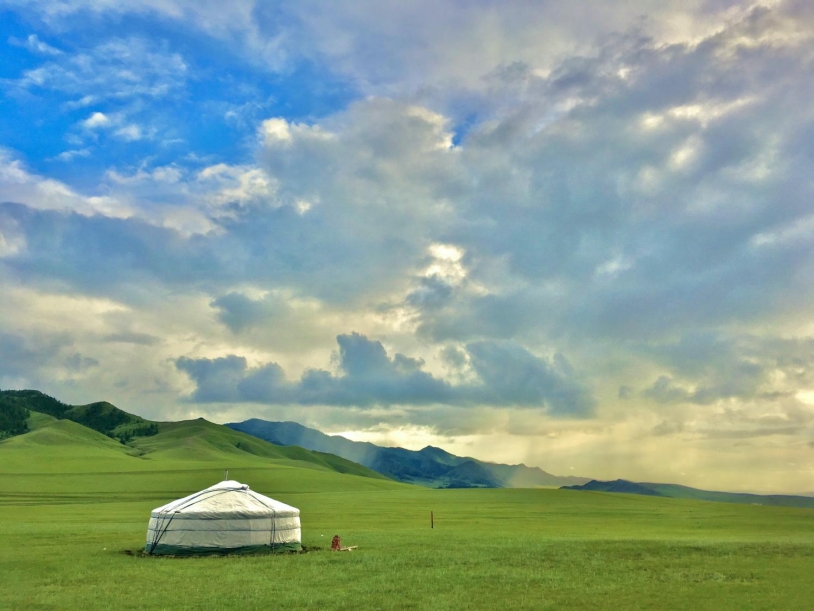

A lone herder's round felt tent, or "ger" and afternoon storm, Hutag-Under county, Bulgan province, 2019. About 72 percent of Mongolia's total territory of 1.56 million square kilometers is considered grazing land. It ranges from desert-steppe, steppe, forest-steppe, and high mountain meadows that provide forage for livestock, and habitat for wildlife. As such, Mongolia has a unique opportunity to produce rangeland products (meat, fiber, hides, plants for herbal medicines, etc.) and environmental services (water, biodiversity, carbon sequestration eco-tourism) for its citizens and the world.
The Mongolian Steppe: A Threatened Ecosystem
Photographer: Daniel Miller
Exhibit Title: The Mongolian Steppe: A Threatened Ecosystem
Location: Mongolia
Mongolia is twice the size of Texas. About 75 percent of the country is rangeland, which provides forage for livestock, habitat for wildlife, watershed functions, and ecosystem services. Mongolia has one of the world’s last intact rangeland ecosystems. As such, the proper use of this resource should be a priority. Mongolia has a long history of nomadic pastoralism, with herders raising livestock for thousands of years. Herders have extensive traditional ecological knowledge and understanding of their environment. However inappropriate government policies, lack of economic incentives for improved range and livestock management, and market failures now threaten the rangelands and Mongolia’s nomadic heritage. The increase in livestock numbers in recent years - from 25 million in 1992 to 75 million now has led to widespread overgrazing, especially in riparian areas and there is increasing evidence of range degradation. Ways need to be found to reduce the livestock population and balance livestock numbers with available forage. Approaches that build on indigenous knowledge and practices, incorporate new scientific findings, including emerging technologies, and adapt current livestock production practices to markets are needed to secure a sustainable range-livestock production system.
I first visited Mongolia in 1992 working as a consultant on a range-livestock development project for the Asian Development Bank. Since that first visit over thirty years ago, I have been back to Mongolia numerous times for work and pleasure and have traveled throughout the country. Trained as a range ecologist and having worked as a cowboy before, I am particularly attracted to the wide-open spaces of Mongolia and its horse-riding pastoralists, or nomads. I am increasingly concerned with the mismanagement of the rangelands, the degree of overgrazing, and the decline in the health of the rangelands. Fortunately, much of the landscape is resilient and can rebound with improved management.
Mongolian National Federation of Pasture User Groups (MNPUG)
wildakman@gmail.com
Make Comment/View Comments